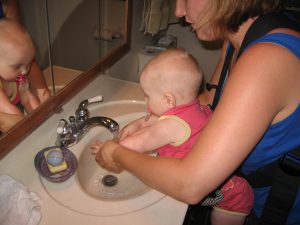Josh Hafner of USA Today reports Toronto-area police announced Friday that they had arrested suspects tied to a trafficking ring of drugs, stolen cars and a truckload of the rich, hazelnutty goodness that is Nutella.
 “Yes, I said Nutella,” confirmed Det. Sgt. Paul LaSalle, per the Toronto Star.
“Yes, I said Nutella,” confirmed Det. Sgt. Paul LaSalle, per the Toronto Star.
An elaborate sting dubbed “Project Cyclone” resulted in York Regional Police divvying 137 charges between 23 suspects, the Star reported, including 60-year-old Balwinder Dhaliwal – the so-called “King of Car Thieves” once profiled on the History channel’s Mastermind series.
In the process, police recovered stolen goods totaling roughly 3.75 million U.S. dollars, including 60 vehicles, $149,000 worth of loose cash and assorted amounts of heroin and cocaine. Also found: a trailer chock-full of that creamy spread of the gods, Nutella.
LaSalle said he wasn’t surprised by the stash of chocolatey breakfast bliss, which amounted to about $16,300 in U.S. currency.
“I’ve never seen an investigation that did spiral into so many directions,” he said, according to the Star.
A spike in car thefts led to the investigation beginning in 2015, around the time that a new body shop named Benefit Motors opened in the nearby suburb of Vaughan.
Police grew suspicious of the business and eventually tracked two luxury cars to the shop that were left running in the same driveway to warm up, YorkRegion.com reported.
Police said the thieves targeted mostly luxury cars from brands such as Lamborghini, Maserati and Porsche. Once stolen, the thieves made fake papers for them and changed their identification numbers before reselling them, authorities explained.
“If someone in the criminal world wanted a cheap and nice ride, they came to see the Dhaliwals,” LaSalle said, according to the Star.
Unloading the filched Nutella proved a less complicated affair: Thieves sold the jars of nutty blessedness for about half their market value, YorkRegion.com reported.












